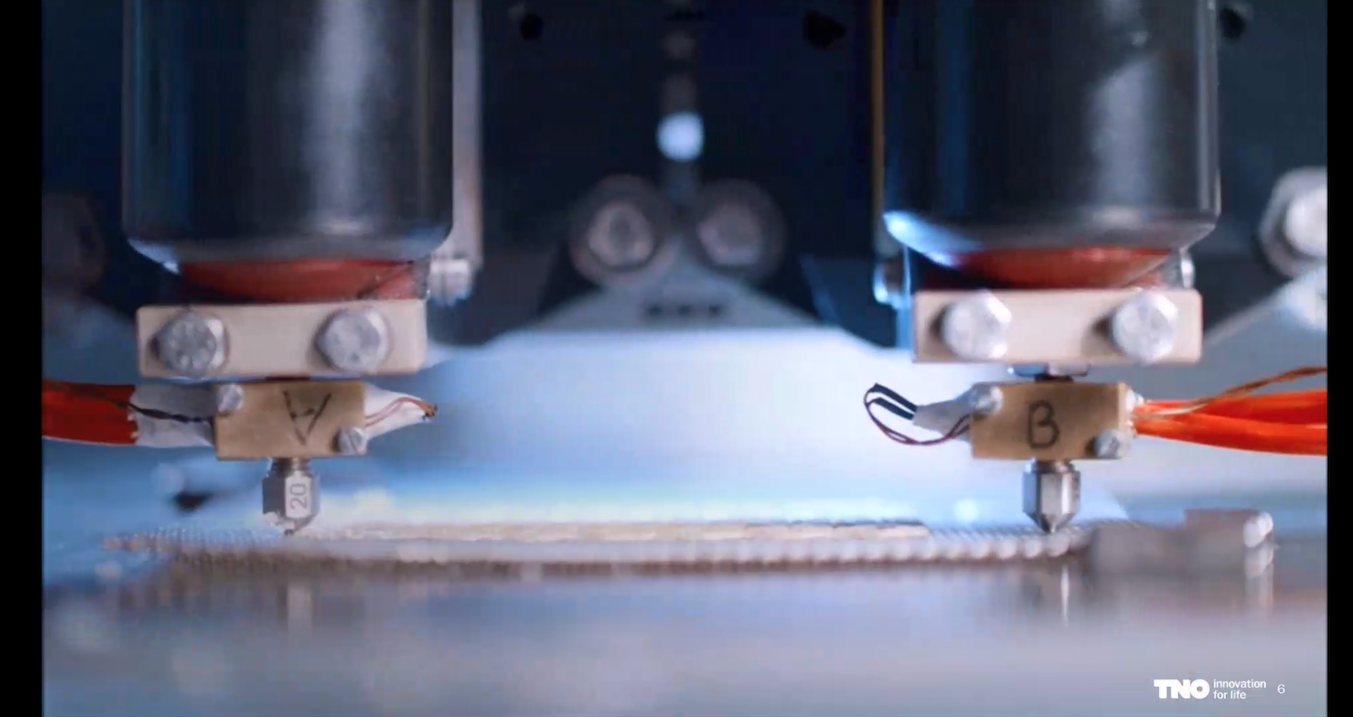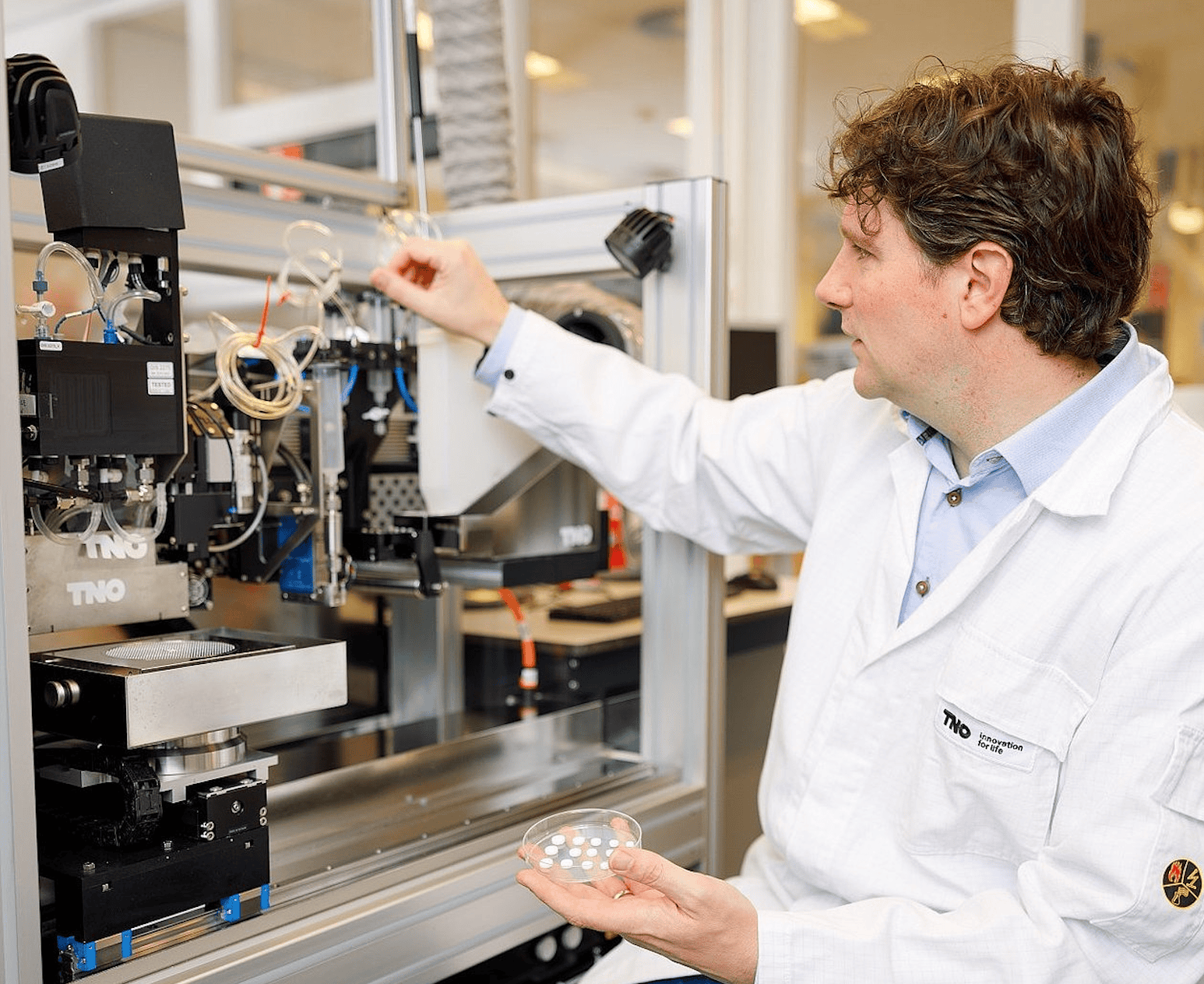
The Netherlands Organization for Applied Scientific Research (TNO) and the children’s department of the Erasmus Medical Center in the Dutch city of Rotterdam are starting a trial which involves the 3D printing of medication. This is what Daniel van der Linden, a scientist at TNO, said during a statement to the press.
The aim is that hospitals and pharmacists in the future will make tablets that are tailor-made for each patient who has to take them. The advantage of this is that the production of pills can be carried out close to the consumers. Consequently, they will not need to be shipped to the Netherlands from, e.g. the US or China. Another advantage is that the dosages of the active substances in the pills can be matched to the needs of each individual patient.
Dosage based on the weight of a child
At the moment you frequently have one and the same drug for a disease that affects different people,” said Van der Linden. In the Sophia Children’s Hospital, which houses the pediatric ward of the EMC, there are patients from a few weeks old up to the age of 18. Their weight varies, so to speak, from 500 grams to 65 kilos. It is understandable that for children of varying ages and weights different doses may be required.”
TNO is currently building prototypes for 3D printers that could be used to make these kinds of tablets. One of the methods is to put the active ingredients of a pill in powder form into a cartridge of the printer. The printer adds a liquid during the printing process so that the layers of powder that the printer stacks on top of each other stick to each other. Another method is that the printer presses these active substances as a malleable substance through a template and builds up the pills layer by layer.
More pills contained in a single tablet
If the 3D printing of pills proves successful on a large scale, the fact that hospitals as well as patients will benefit is clear from Van der Linden’s reasoning. “It should be possible to combine different active ingredients in a pill so that a patient will have fewer pills to take. This is especially convenient for elderly people,” Van der Linden points out. “They often suffer from multiple ailments due to old age that require them to take a variety of pills.”

This will perhaps no longer be necessary if a pill combination is made for each individual patient. They can then be given a combi-pill, a bit like a dishwasher tablet that contains detergent, anti-calcification agent and glazing agent for glassware.
Another advantage of such an application is that the printer can make pills whereby the release of the active ingredient varies from person to person. This can be done with a protective layer around the core of the active ingredient to be printed so that its release is delayed and spread over a certain number of hours.
Collaboration with the largest spaghetti manufacturer in the world
TNO is conducting the research on behalf of the Dutch Ministry of Health, Welfare and Sport in cooperation with major European pharmaceutical companies (the suppliers of the active ingredients for medicines) Merck, Phoenix and DFE Pharma.
Furthermore, the research group is collaborating with the largest pasta producer in the world, the Italian company Barilla. Why are they doing that? Van der Linden claims that the production processes are somewhat similar because pasta dough, just like the ingredients for tablets, is a tricky, sticky substance for printers. On top of that, Barilla has had experience with 3D pasta printing with its Blu Rhapsody project. This was started by the pasta manufacturer from Parma in order to better meet the needs of consumers. Since then, consumers have been able to order custom-made pasta. That yields some amusing products, such as a black colored pasta shell that looks exactly like a mussel shell. A cook who wants to surprise their dinner guests can then put a mussel in it, so you can eat the shell as well. Perhaps the EMC will also experiment with pill shapes for the children’s department, Van der Linden added. If this helps to dispense medication to children, then this is perfectly feasible.
Pill in the shape of a Christmas tree or Easter bunny
So, a pill in the shape of a Christmas tree, or an Easter bunny is not to be ruled out in the future. Or with a flavor to make it more tempting to swallow a pill.
The measure of success for the trial with 3D printed pills will be in the level of accuracy that dosages can be printed. They have to correspond exactly with what has been entered into the computer,” says Van der Linden.
If pills are able to be printed accurately in 3D, the influence of the physician on the patient’s healing process will be more extensive than it is now. They can then be able to administer drugs very precisely and, if necessary, adjust the dosage based on the reaction of the patient’s own body, which can be continuously monitored by wearing sensors.
“This is good for the caregiver and the patient,” Van der Linden notes.

Beeld: TNO








